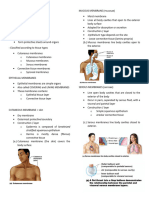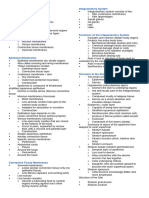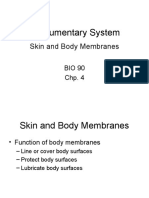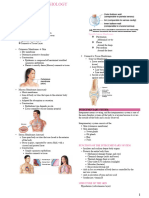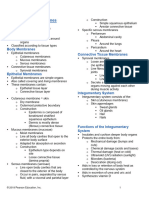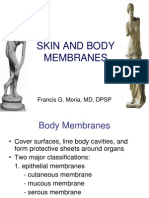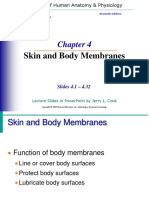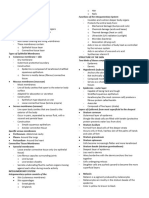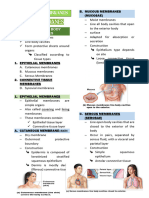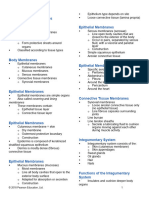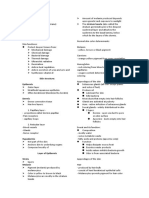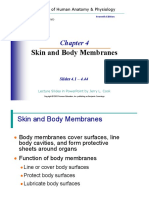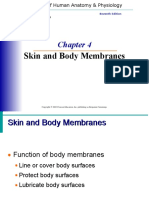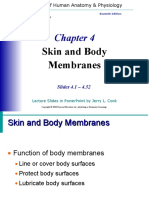0% found this document useful (0 votes)
121 views5 pagesChapter 4 Integumentary System
The document summarizes the integumentary system, including the three types of body membranes - epithelial, connective tissue, and serous membranes. It describes the structure and function of skin, which is the largest cutaneous membrane. The skin has three layers - epidermis, dermis, and subcutaneous tissue. It also discusses skin derivatives like hair, nails, and glands, as well as factors that affect skin color and abnormalities.
Uploaded by
Clarisse Anne QuinonesCopyright
© © All Rights Reserved
We take content rights seriously. If you suspect this is your content, claim it here.
Available Formats
Download as DOCX, PDF, TXT or read online on Scribd
0% found this document useful (0 votes)
121 views5 pagesChapter 4 Integumentary System
The document summarizes the integumentary system, including the three types of body membranes - epithelial, connective tissue, and serous membranes. It describes the structure and function of skin, which is the largest cutaneous membrane. The skin has three layers - epidermis, dermis, and subcutaneous tissue. It also discusses skin derivatives like hair, nails, and glands, as well as factors that affect skin color and abnormalities.
Uploaded by
Clarisse Anne QuinonesCopyright
© © All Rights Reserved
We take content rights seriously. If you suspect this is your content, claim it here.
Available Formats
Download as DOCX, PDF, TXT or read online on Scribd
/ 5

